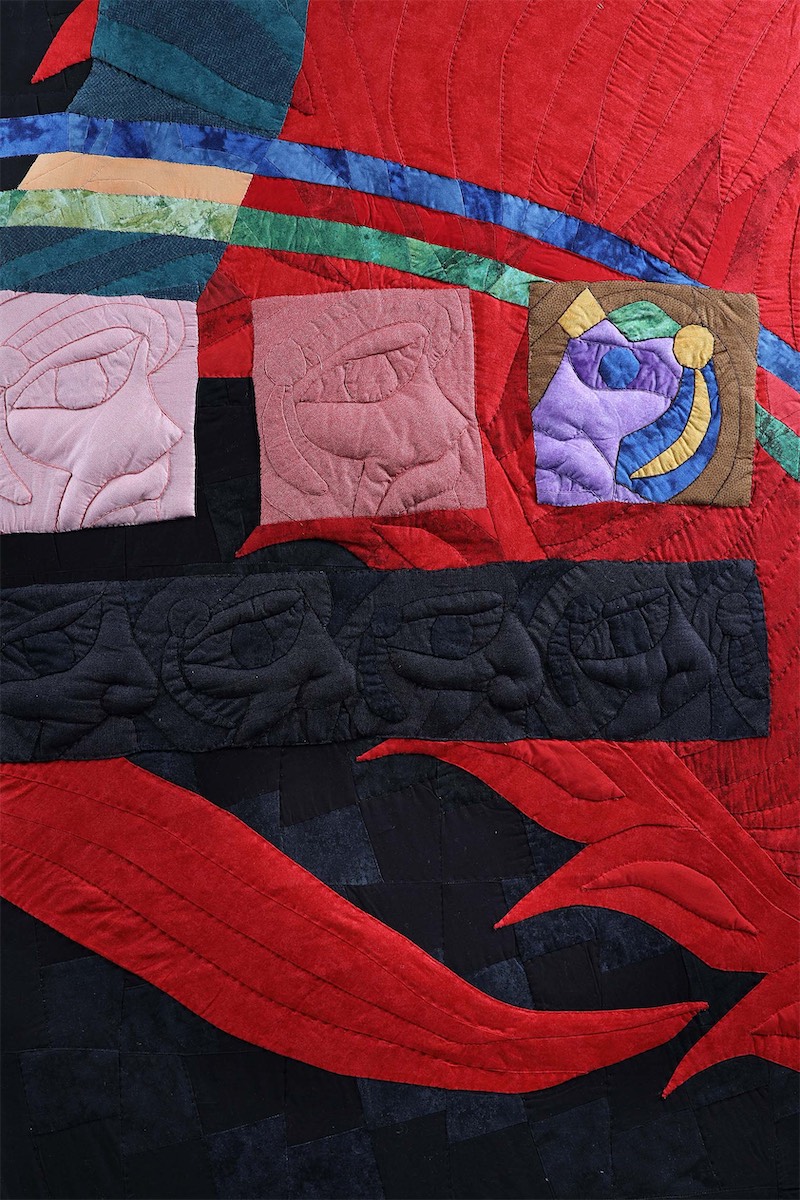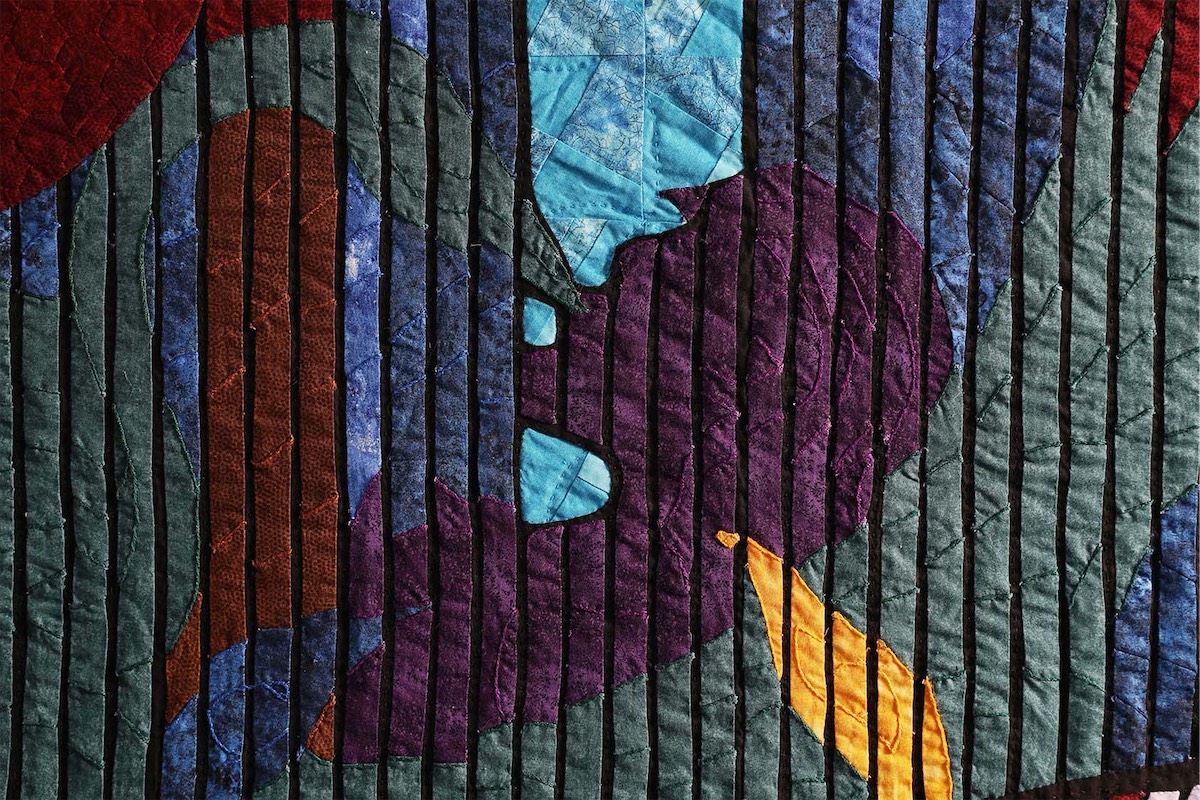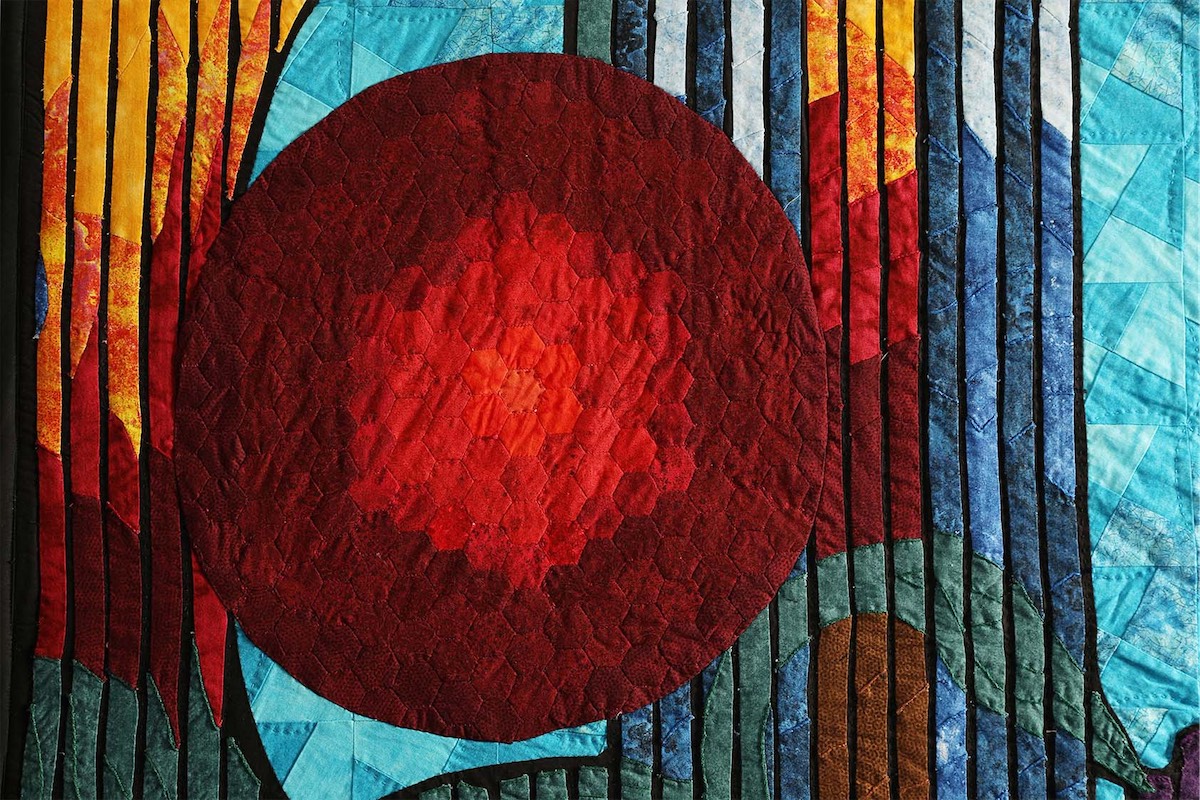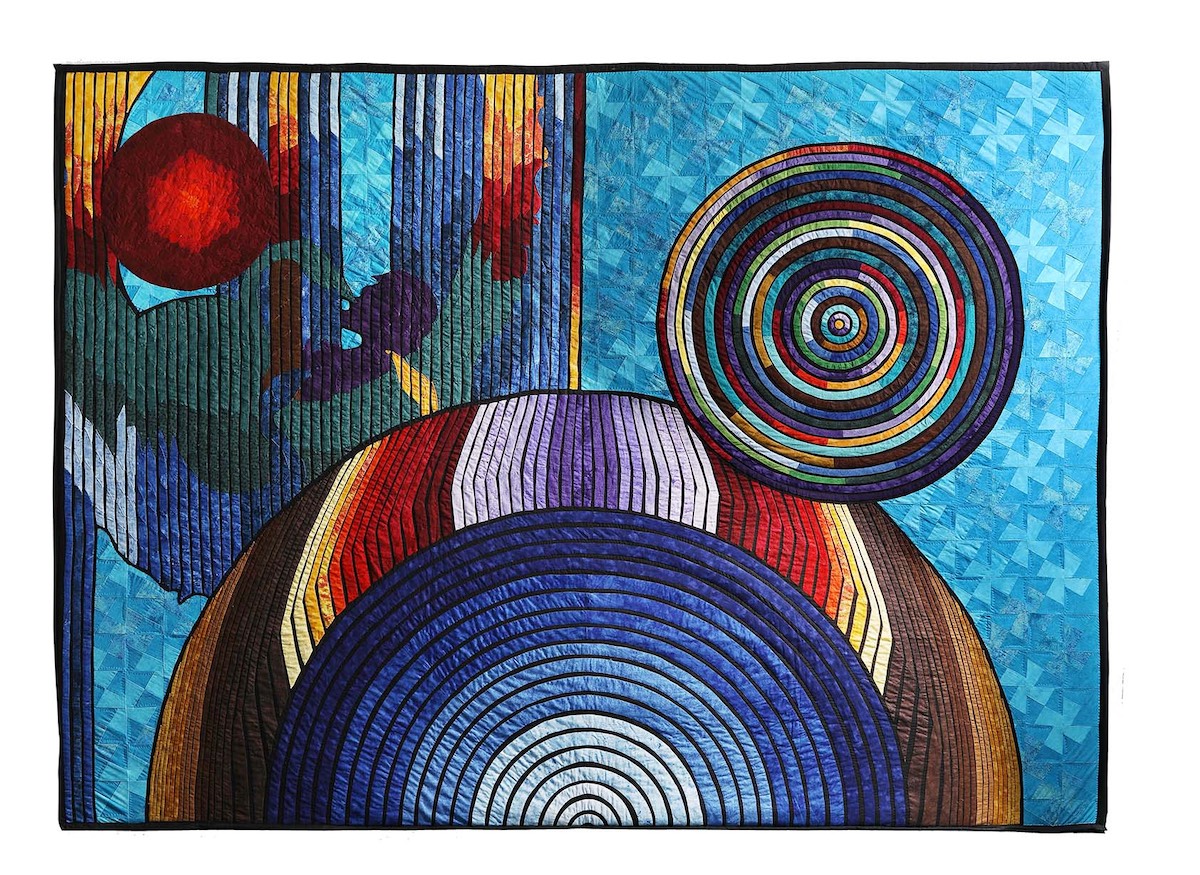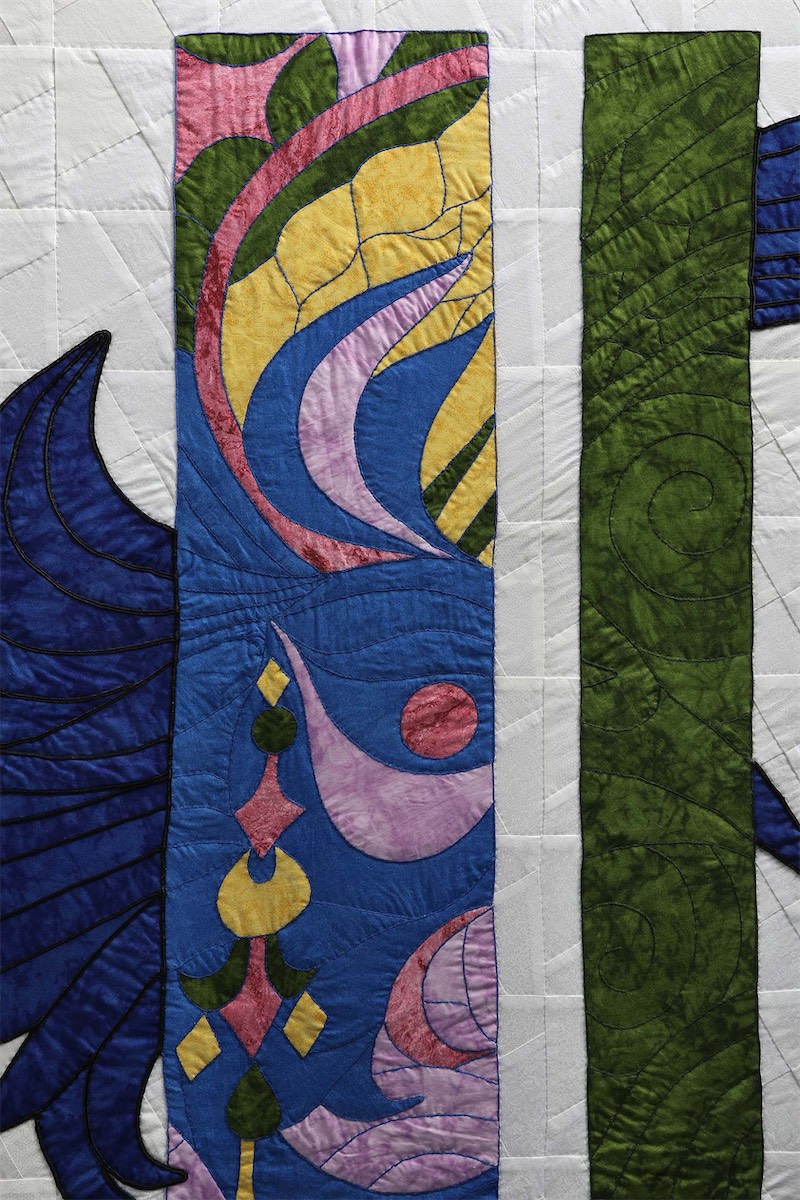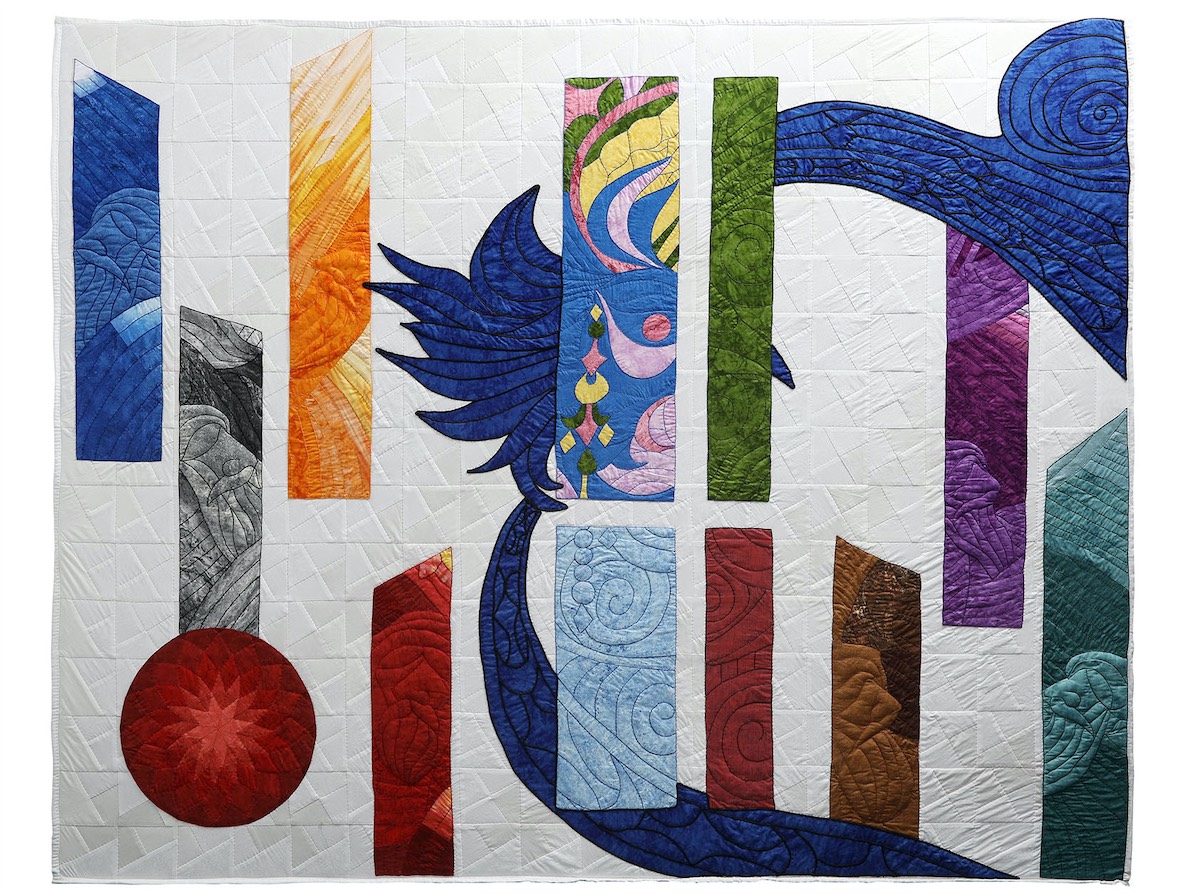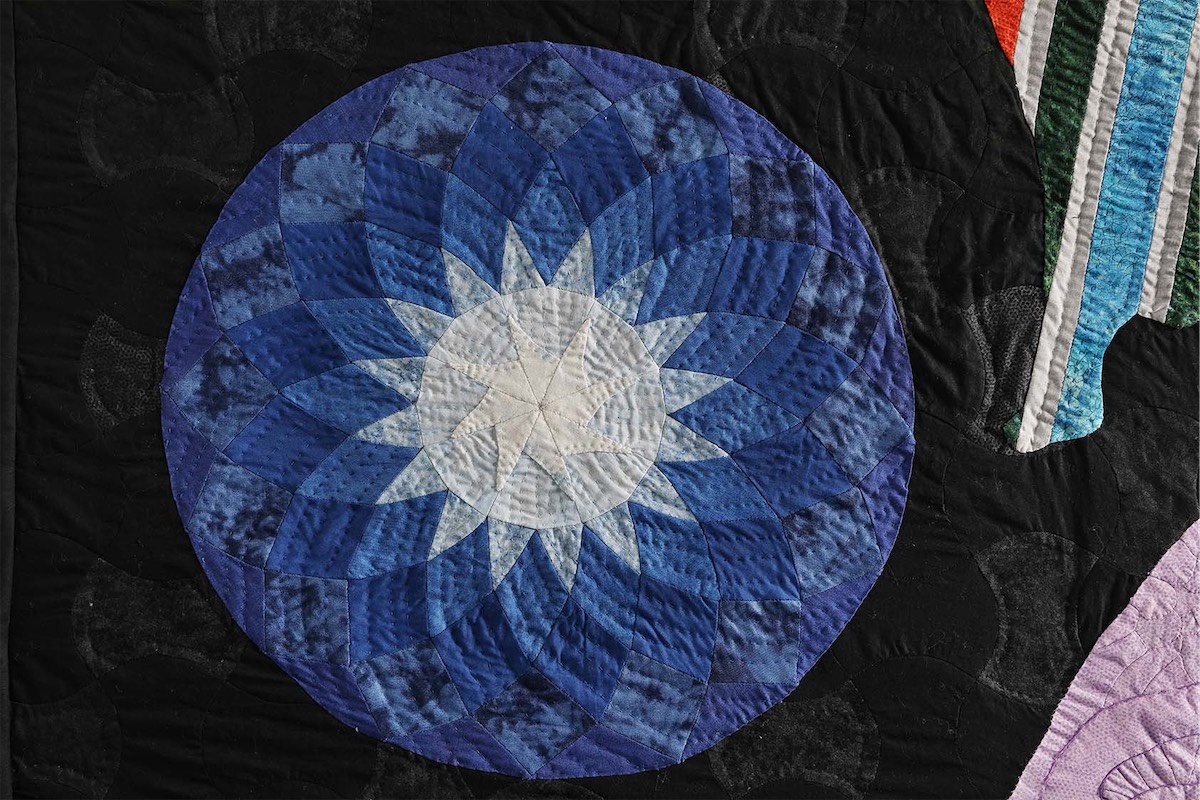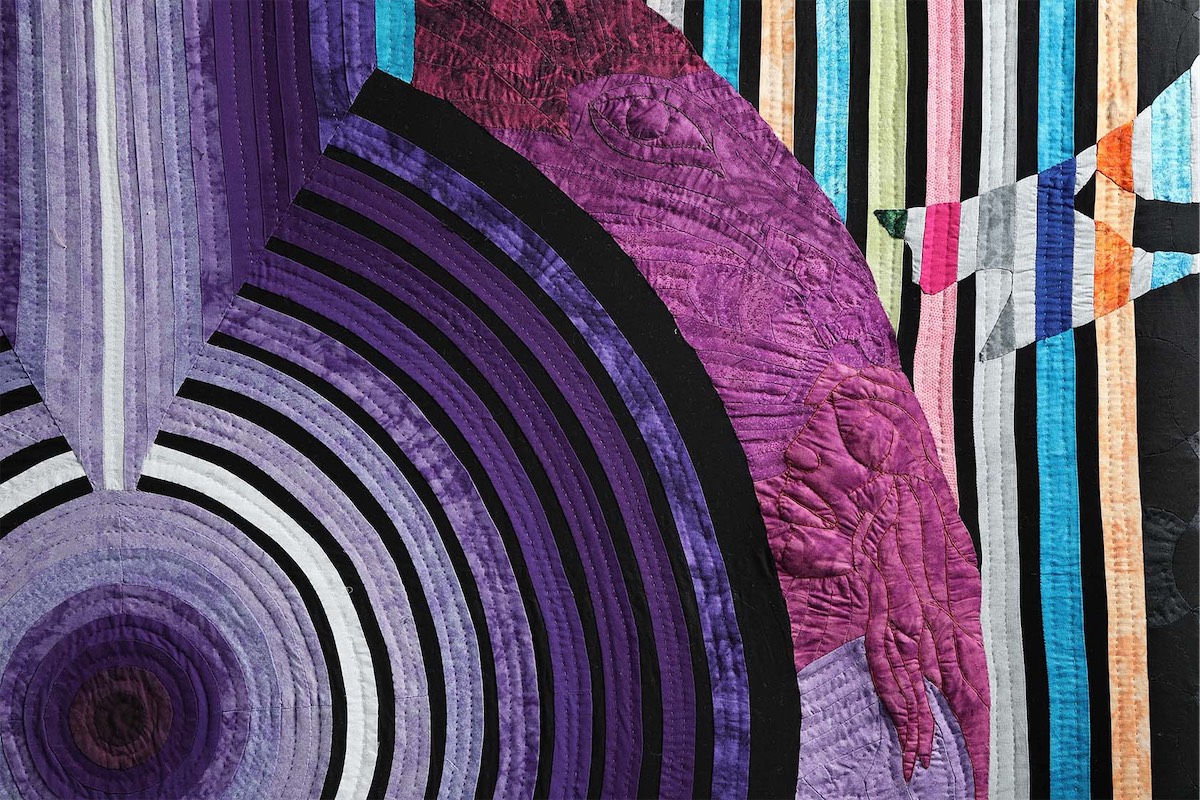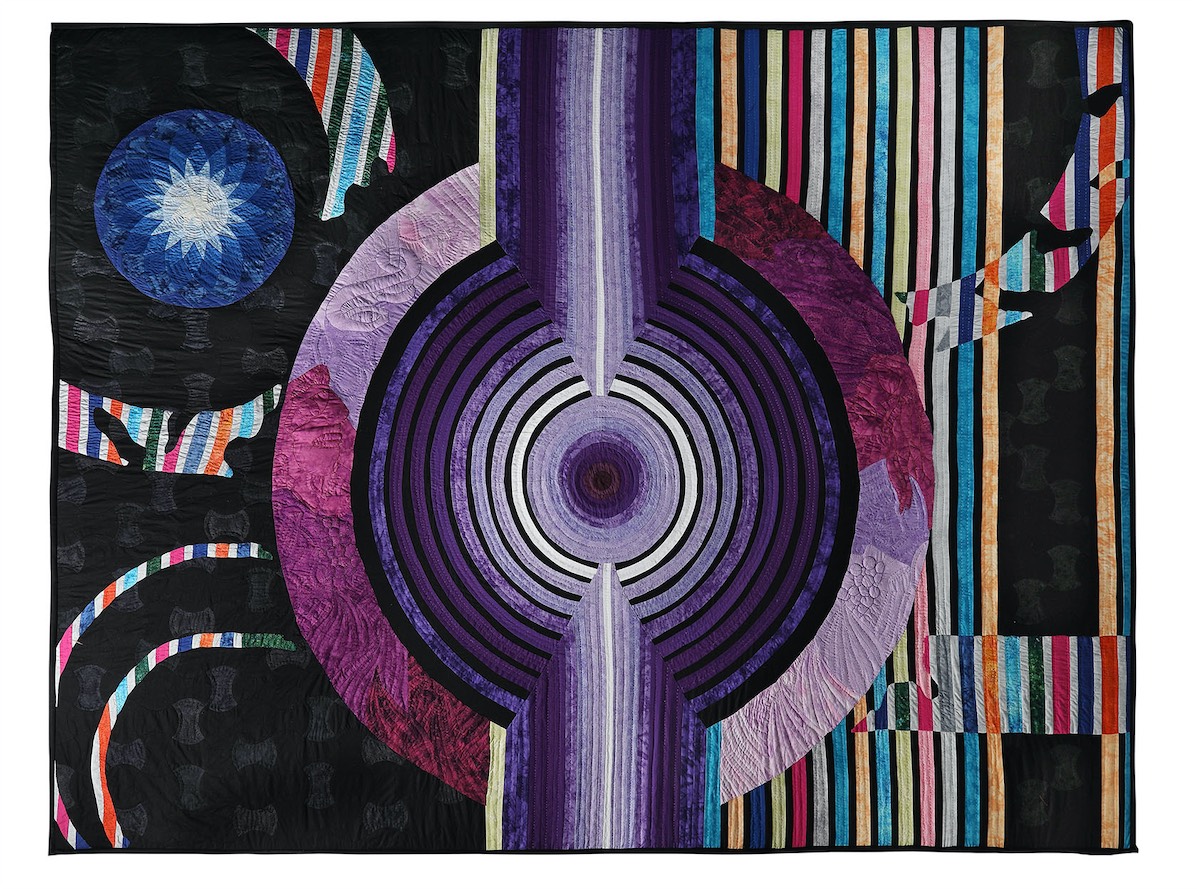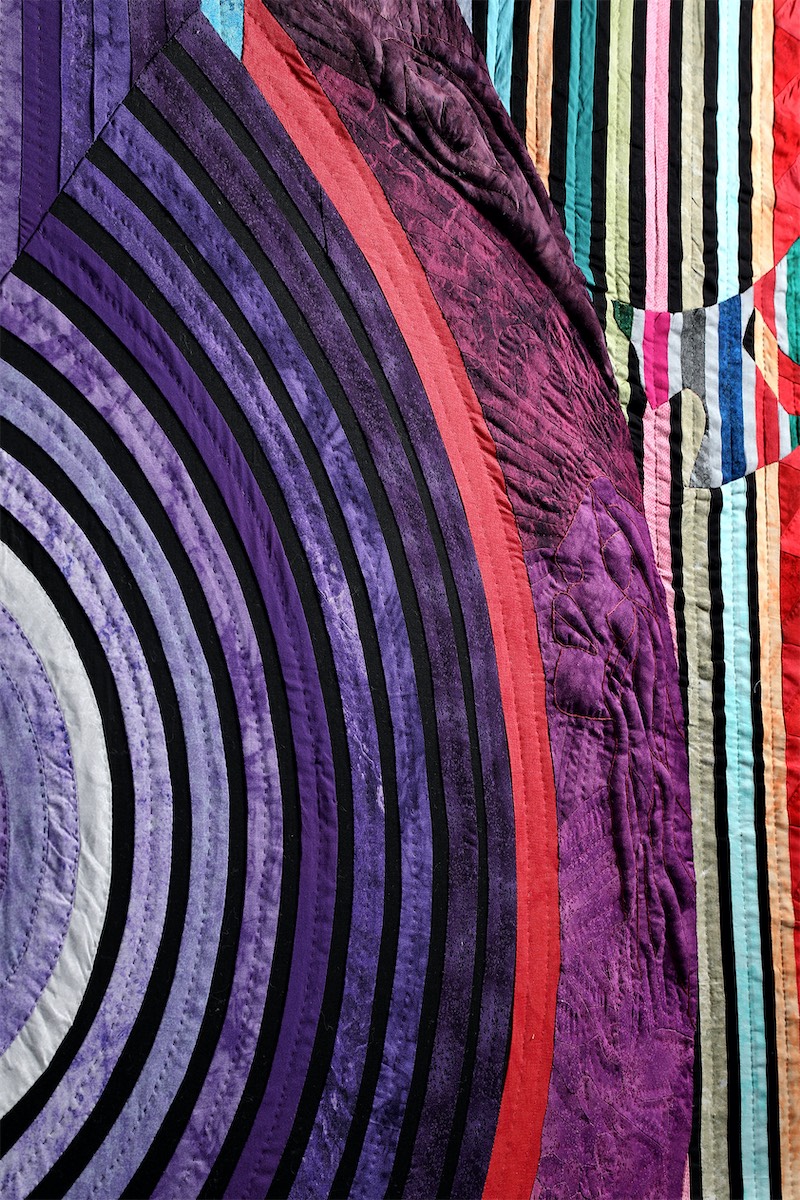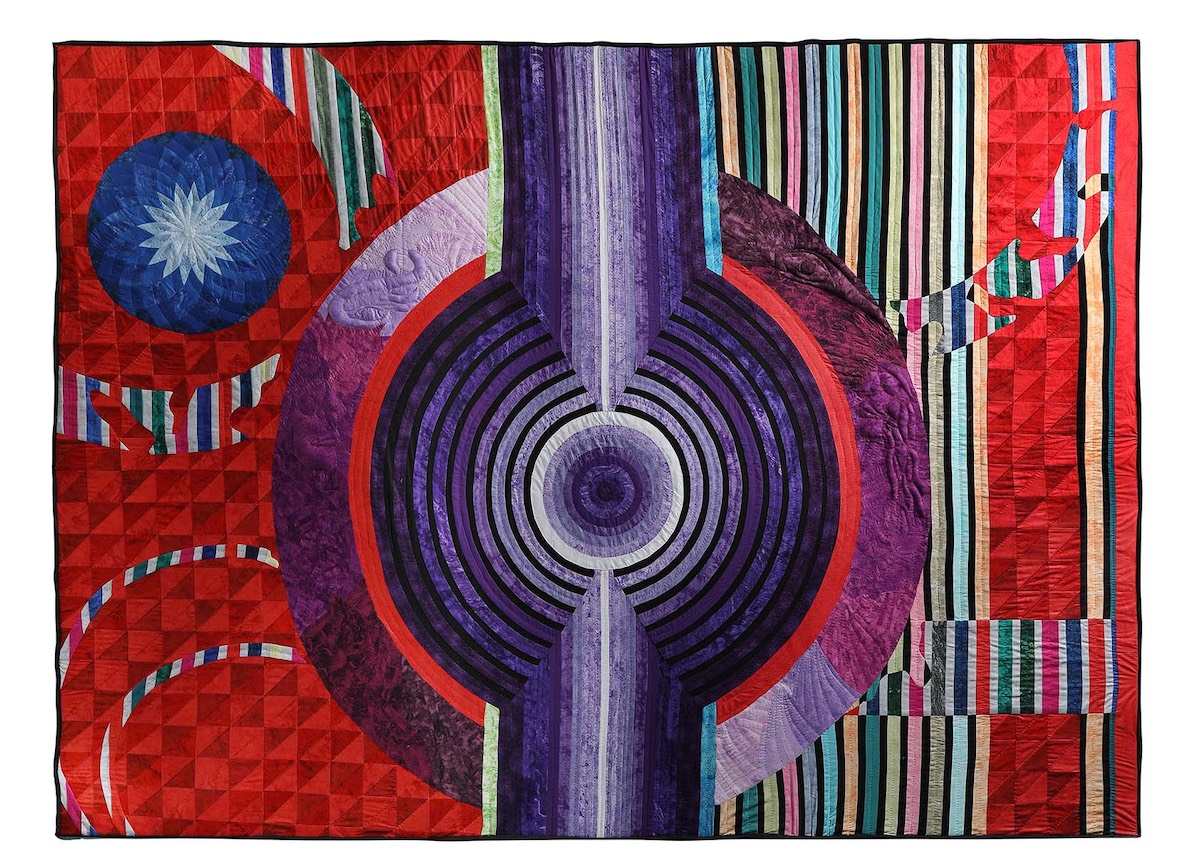29 April – 20 May 2017
Sun Road
Galerie Michael Schultz, Berlin
Curated by Christoph Tannert
Patchworks may have emerged from the sewing together of discarded patches to mend worn-out textiles but gradually became an intricate art form. Patterns and textures come together to create a new design through a chaotic re-arrangement. It is orderly chaos for creating abstract artistic images, where asymmetry is chosen instead of symmetry, and irregular pieces interlock each other like the pieces of a jigsaw puzzle. Perhaps most interestingly, it has deep connections with storytelling.
The patterns contain ideas, layers and even narratives. They are products of their time and the documents of the past. The uses of the fabrics reveal the historical traces of what people have gone through and accumulated. The works in Road Sun show how the artist exposes this accumulated aesthetics of past lives employing mythological materials in his patchworks.
Fabrics in many forms embody historical transformations. A patchwork is a proving ground for ideas that span the centuries and involve many cultural touchstones for the artist. Thus, he explores patchwork as a cultural and rhetorical art form. He incorporates tradition with his symbols and iconography, and the resulting works challenge the preconceived notions of craft, history and painting itself. If patchworks recount historical experience, they also represent a material source for writing history.



